Nathan Vincent is a fiber artist who lives and works in New York City. Using yarn and crochet and fiber techniques Nathan has produced a beautiful body of work which has been exhibited at the Bellevue Arts Museum, the Leslie-Lohman Museum of Gay and Lesbian Art, and the Cornell Fine Arts Museum to name but a few. Vincent has participated in residency programs at the Museum of Arts and Design in NYC and the 7Below Residency in Burlington, Vermont.
In this interview Nathan tells us how he became fascinated with yarn at a very early age, he talks about the light bulb moment when he was introduced to crochet and how his brilliant and provocative art has developed, and what inspires him today.
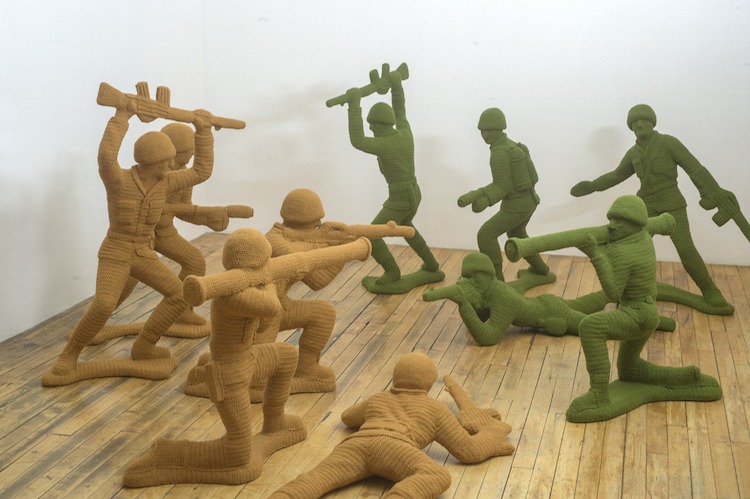
TextileArtist.org: What initially attracted you to textiles as a medium?
Nathan Vincent: My attraction to textiles began very early on in my childhood. My mother was reticent to teach me things like cross stitch, crochet, knitting, and sewing, although I knew at the time that she had that knowledge. I remember seeing the things she made and wanting to be able to replicate this action – to be able to create something useful, comfortable, or beautiful.
I believe her initial reluctance made me desire the knowledge even more, and I couldn’t understand why she wouldn’t want her son to be learning these crafts. There was something mysterious about this process of creation and I wanted in. I wanted to be like her because she possessed this magic. I was a curious kid as well, and I wanted to know how to do things and I found that using my hands to make something felt incredibly natural and fulfilling.
This translated into an intense interest in needlework crafts and a natural progression from one craft to another – discovering plastic canvas through my aunt, tackling cross stitching, latch hook, macramé, and finally what I deemed in my head as the most difficult of them all, crochet and knitting.
It was with this personal history that in college I began embroidering on my paintings in the footsteps of an artist named Ghada Amer. The style evolved a bit to be more about texture and embellishment and eventually led to considering crochet a technique and yarn a medium for art making.
And, more specifically, how was your imagination captured by yarn?
Beyond my childhood, I have one specific incident that I can pinpoint as the place where yarn took hold for me. During a visit with a friend I had studied with in CA, she picked up the sweater she was working on and began to crochet while we spoke. The action was mesmerizing and I took notice of what she was actually doing – crocheting in the round.
Due to an early negative experience knitting in the round, I never thought to crochet that way, and the obvious light went on in my head – crocheting in the round is working in 3 Dimensions, which is sculptural in nature. Having been working with embroidery and different fabrics, my mind was in the textiles mode and crochet allowed me to jump off the canvas. My first crocheted piece was made with this very furry, almost hair-like yarn, and I have to say that all that texture helped raise my interest level as well.
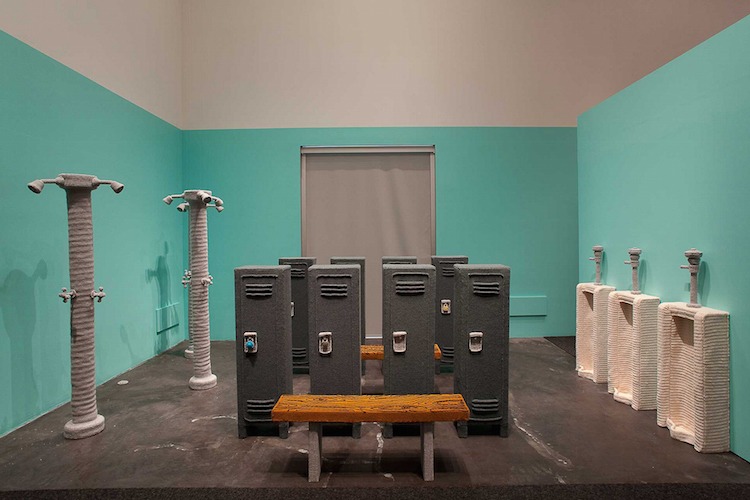
Finding your voice as an artist
What or who were your early influences and how has your upbringing influenced your work?
As mentioned, my mother had a lot of creative influence on me as a child, and she was also the one telling me to basically keep my feet on the ground – that there’s nothing for artists to do, and the life of an artist is not realistic. It was good that she tried to disuade me as it probably just solidified my passion and desire. As to her reluctance to teach me needlework, I think that very action was what set my artwork down it’s current path. It was valuable to be able to relate my own personal experience of gender expectations to the much larger conversation of what gender means and how it is projected/reflected in society through objects, tasks and roles.
I also had many wonderful professors, but the most influential is a gentleman named Michael Torlen. His generosity of spirit is abundant, and he spent many hours teaching me how to see the world differently, how to see the truth in my own artwork, and the importance of finding your voice as an artist.
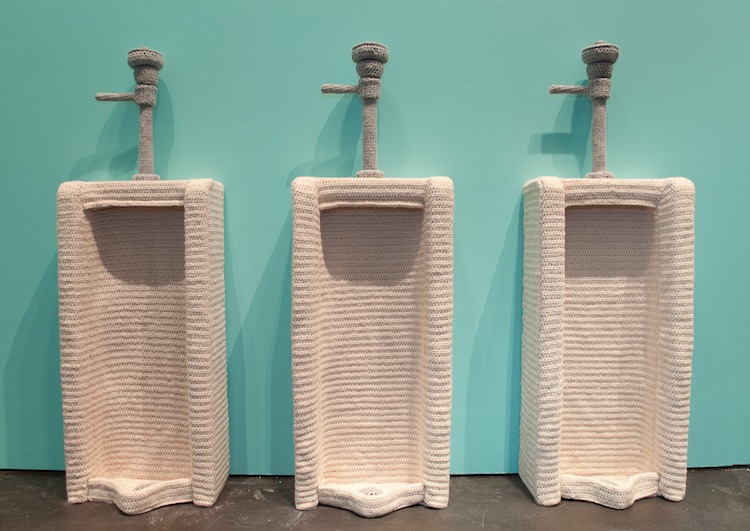
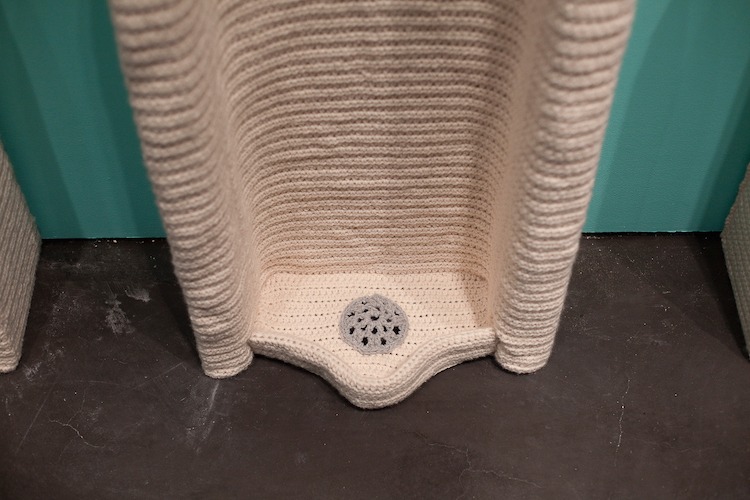
Responding to the work
Tell us a bit about your chosen techniques.
I started working in embroidery and then knitting and crochet. Today I use mainly crochet hooks to make my work, and lately I’ve been experimenting with ways to use the crochet hook that might not be considered crochet in the traditional sense. But, for the most part I’ve found crochet to be the most versatile tool in my fiber/crafting toolbox.
Crochet allows you to work on one stitch at a time, making decisions as you go as opposed to mapping things out explicitly ahead of time. Planning can be useful, but I really find I get in the zone when I feel like I am sculpting in the yarn and responding to the work as it is happening.
Because of the knotting that happens in crochet stitches, I find it does the job of creating stiffer or stronger structural pieces. Armatures are often employed, but the crocheted fabric drapes less than knit fabrics, and this works to my favour in sculpture.
Crochet also speaks to a certain aesthetic of a particular era and type of femininity for me. The holes often created in crochet take me back to afghans and DIY home décor. The chunky grid-like nature of the weave is reminiscent of the years of my childhood and those just proceeding that carried over into my life from my parents’ generation. I found that this aesthetic and the meanings it carries leant itself to my critique and questioning of roles in a more powerful fashion.
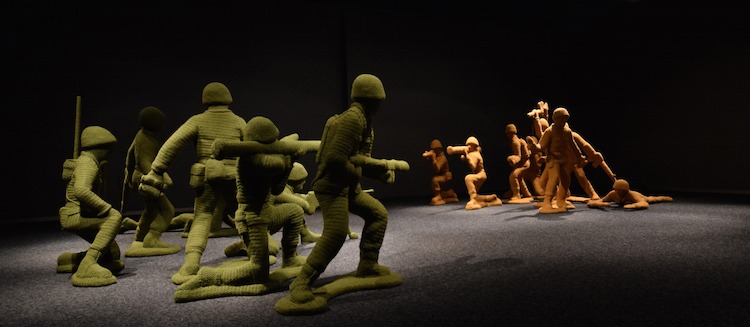
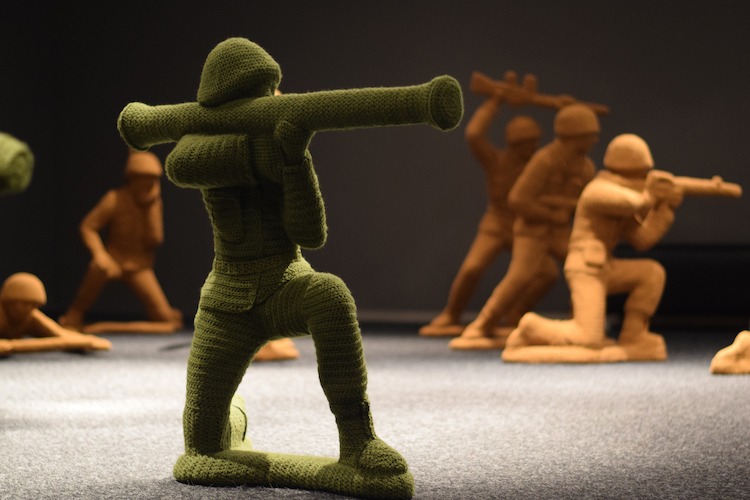
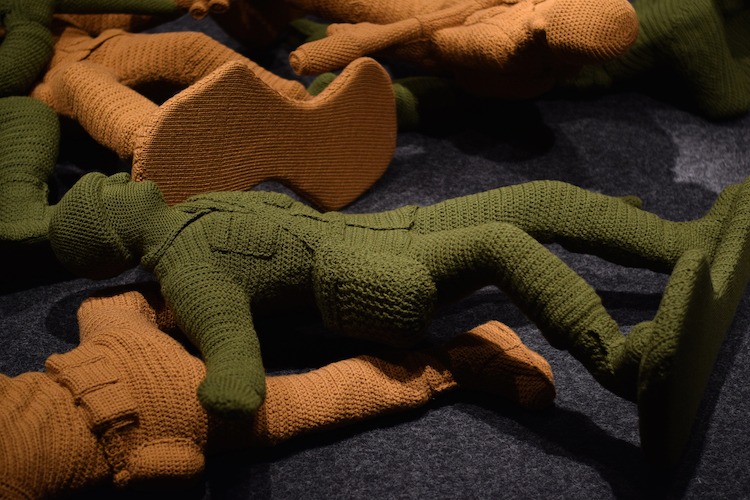
How would you describe your work and where do you think it fits within the sphere of contemporary art?
My work sits somewhere along the intersection of installation, sculpture, and fiber art or craft based work. It is representational, conceptual and humorous. I feel the contemporary art world is exploding and doesn’t have clearly defined segmentations so much any more. Yes, there are still galleries and museums that only show painting or sculpture, but so many artists are working beyond these limitations in multiple mediums.
It is hard to say where one’s work fits, especially in the moment. It usually takes years and years for movements to distinguish themselves and it’s only in retrospect that we decide to include some artists in those movements. So, to answer your question, I think my work falls under many headings, but it doesn’t really matter to me how people chose to define it.
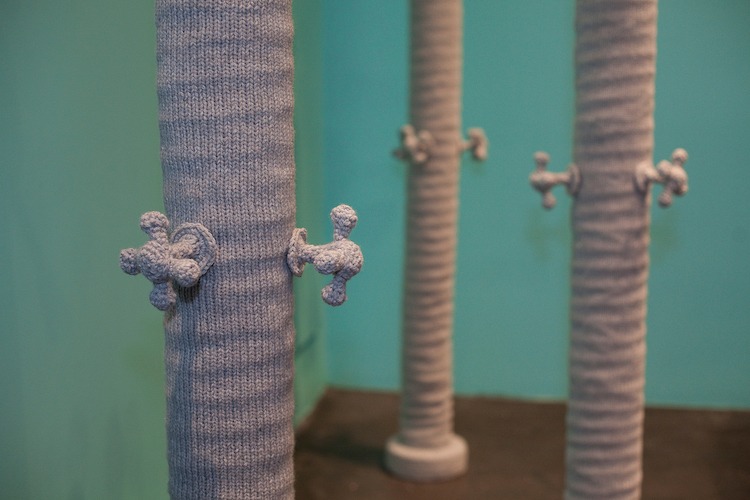
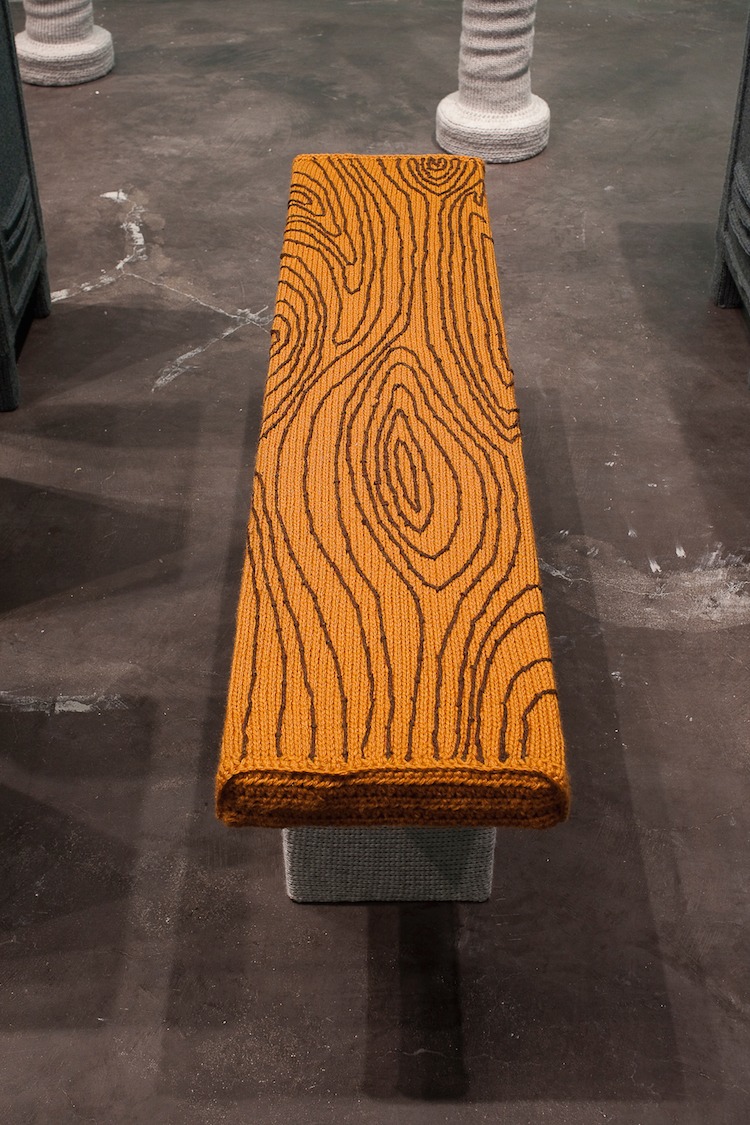
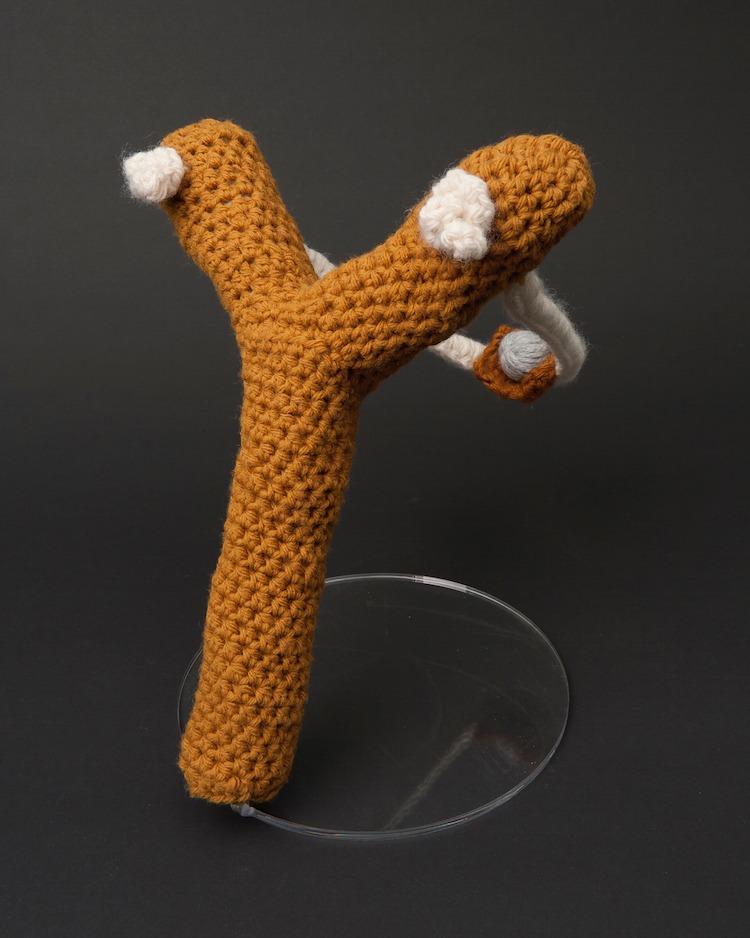
Do you use a sketchbook? If not, what preparatory work do you do?
I do use a sketchbook. I went through a period where I was producing so much work for discrete projects that the production time cut out much of the exploration on paper for future projects. I’m reconnecting with this process and finding it exciting and motivating. So much comes out when you put pencil or pen to paper, and you can work through many of your problems before you even begin the piece.
I often times sketch out the works, play with scale, and chart out sample stitches before moving on to working with the yarn. With my installation work, I often build a maquette or create the space in Google SketchUp. Beyond that is a lot of exploring, playing, and testing techniques with the yarn in hand.
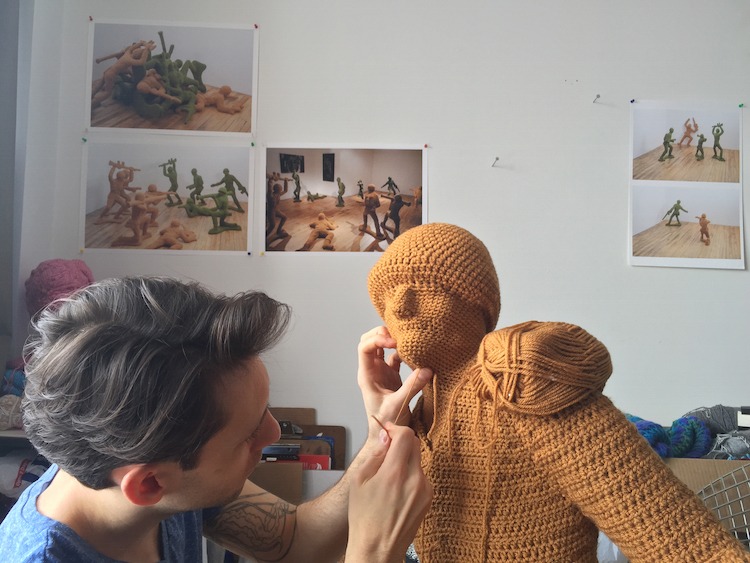
Settle in and focus
Tell us about your process from conception to conclusion.
That’s a hard one since the process changes for every project. My most recent installation began with one piece. I sculpted a 3 foot army man (based on the tiny green plastic soldiers) out of foam and crocheted around it. This first piece was interesting, but it was obvious from the get-go that the piece would be so much stronger if there were many more.
Sketches of groupings, piles of army men, and installations led to a meeting with Stefano Catalani, Director of Art, Craft, & Design at the Bellevue Arts Museum. When he saw the work and heard my idea, he was extremely excited about showing it as an installation. From there, the process was refined and through much practice, sped up a bit to ensure that all of the pieces were ready for their debut.
What environment do you like to work in?
In New York City, this is kind of a moot point. You work in whatever environment you have available since everything is so small and crowded. I currently work out of my home – I’m very lucky that we have a separate space dedicated to my studio. When I wake up in the morning, I can head straight to work. And, when I’m working late, I don’t have to worry about how long it will take to get home, and if I’ll have the energy to commute! The down side is that the studio sometimes takes over and creeps into the rest of my world. There are days when the studio is a mess, as well as the kitchen and the living room.
My favourite type of studio day is typically in the middle of a project when I’ve found my groove. NPR is on the radio and I’ve got a cup of tea nearby and I can settle in and focus. During these times I feel pretty zen-ed out, and I love my life.
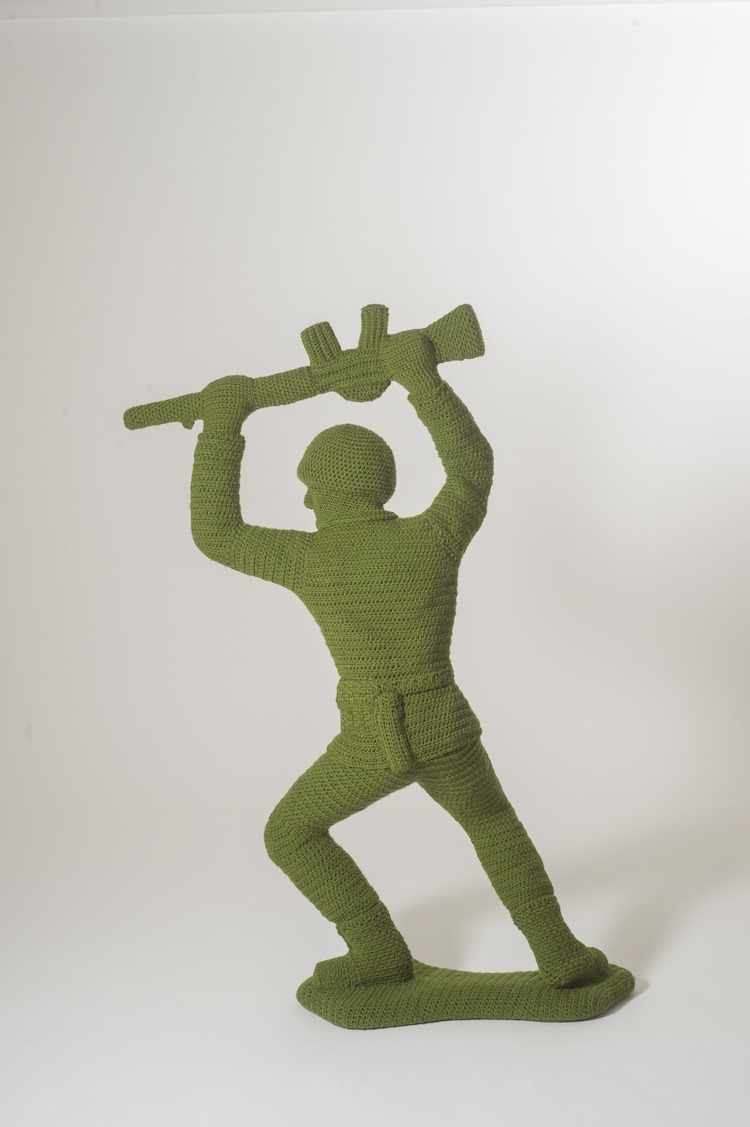
A desire for organisation and control
What currently inspires you?
You know, I’ve been speaking with students a lot lately and I have to say that students are incredibly inspiring and motivating. They have so much passion and drive and it’s hard to not feel inspired by that. It’s also nice to look around and realise that people of different ages see the world in a completely different light. It’s that perspective that makes us all interesting.
I’m also pretty inspired lately by structure, architecture, and form. There’s been a lot of exploration in the studio around freeform crochet processes and new materials. Much of my work has been very structured, clean and tidy. This has served me well, and the concepts I’ve been working with have been strengthened by this desire for organisation and control.
Recently though, I’ve been enamored by textiles that are less rigid and more loose, and I’ve been experimenting with deconstruction as well. And, on the flip side, I’ve been working with liquid plastics and resins as ways of building more structure and self contained architecture into the yarn pieces.
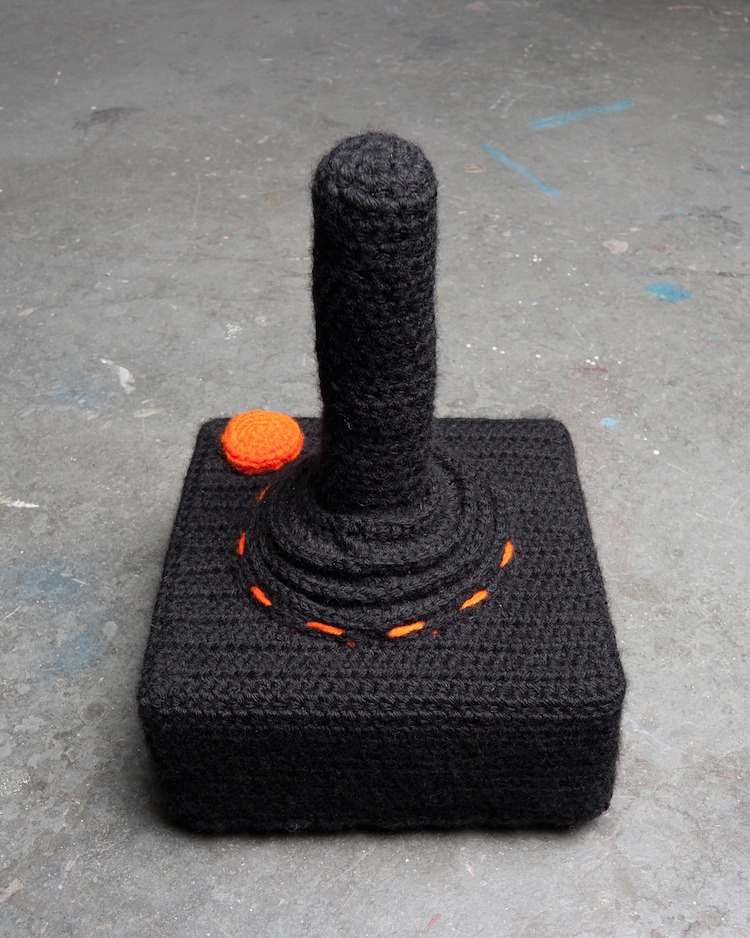
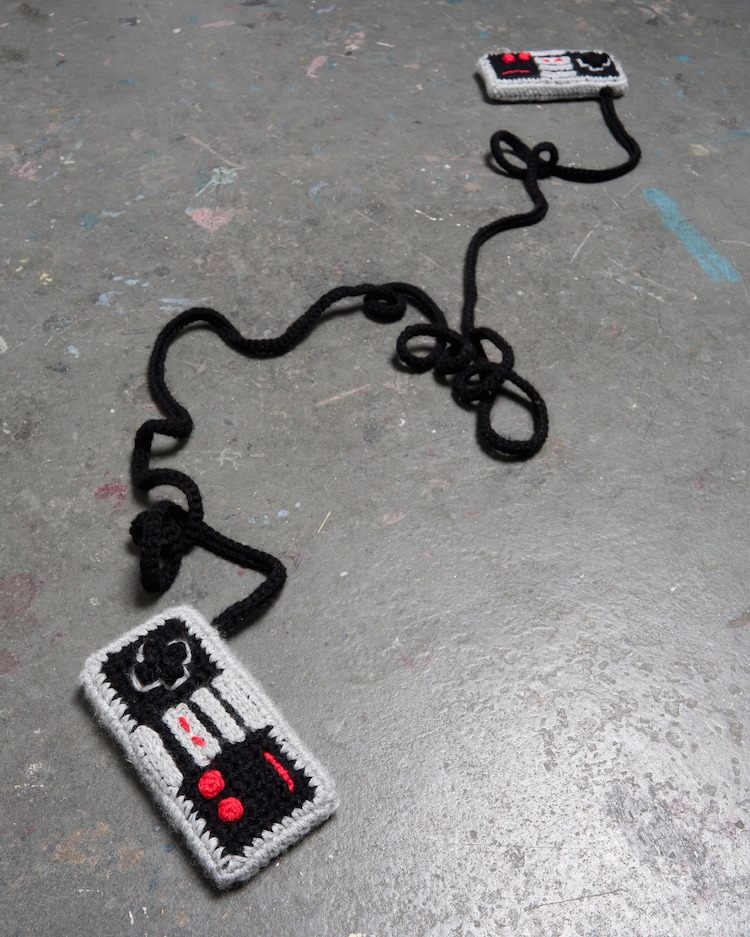
How has your work developed since you began and how do you see it evolving in the future?
For one thing, my technique has improved significantly. One would hope that after 10 years of crocheting it would have! I look back at very early work and think of all the ways I would make it differently now. But, there’s something wonderful about holding a piece and realizing you made it, even if it looks nothing like the aesthetic you’ve developed – it is humbling to have a physical representation of that growth.
I’ve also learned a lot about space and the use of space in my work. Now, when I make smaller one-off pieces, I’m constantly trying to place them in context in my imagination – which can be difficult to do given you don’t have much control over exhibition of individual works once you send them out into the world. The installations have taught me to consider the human form in relation to the art, which has affected all of my work. Scale plays a large role in this process and I feel that I’ve become better at understanding these relationships.
I hope that in the future I can find a way to successfully incorporate some abstraction into my practice. And, I’m always interested in adding layers of meaning to my art. Uncovering new insights into each piece as it is being created and displayed has been a joy, and I hope that that continues throughout my career.
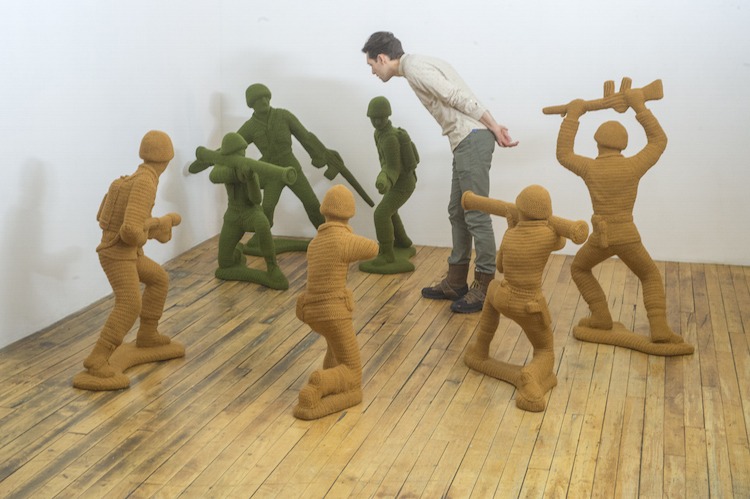
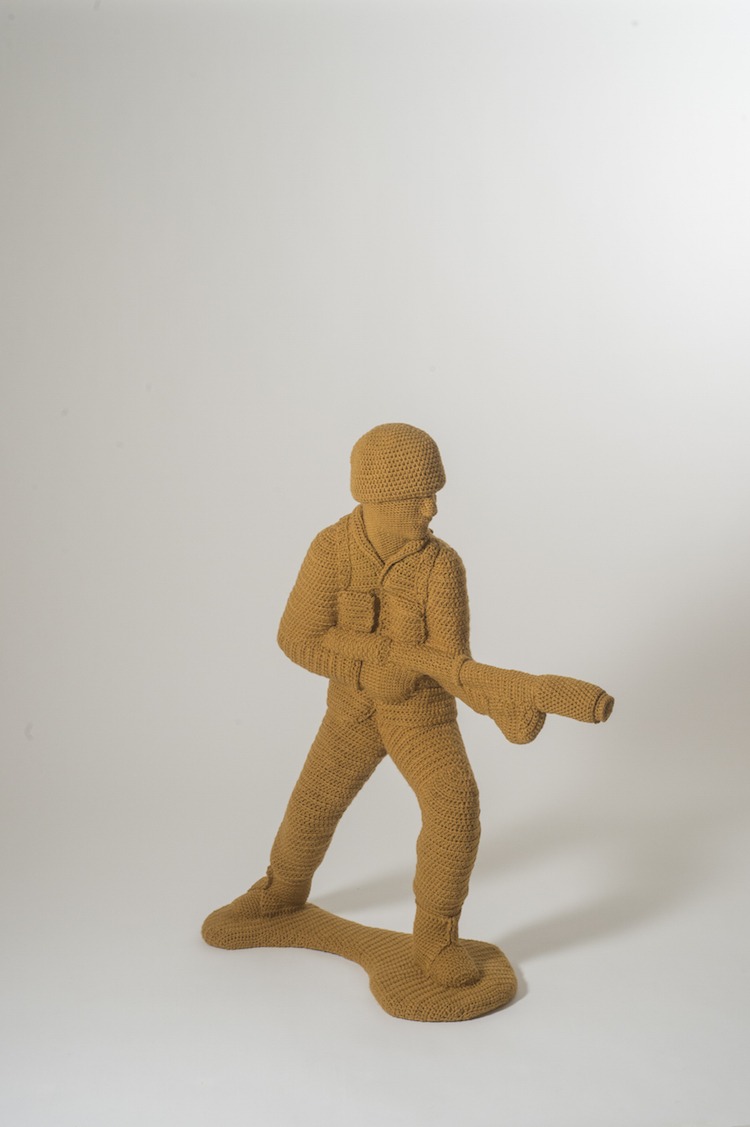
Where can readers see your work this year?
My work is on view currently at The Children’s Museum of the Arts in New York City in an exhibition called, Sew What? through May 22nd, 2016. You can also see my Locker Room on display as a part of the travelling exhibition, Queer Threads, Crafting Identity and Community at Maryland Institute College of Art through March 13th, 2006. It will then be off to Boston, and you can see more about that on my website as the time draws near, or sign up for my email newsletter through my site as well. My artwork is be highlighted in an upcoming book, Queer Threads, Crafting Identity and Community by Ammo Books, set to be published this year
Gallery representation: www.emmanuelfremingallery.com
Most recent exhibition at Bellevue Arts Museum (includes a stop motion animation of the army men): www.bellevuearts.org
For more information visit: www.nathanvincent.com
If you’ve enjoyed this interview why not share it with your friends on Facebook using the button below?
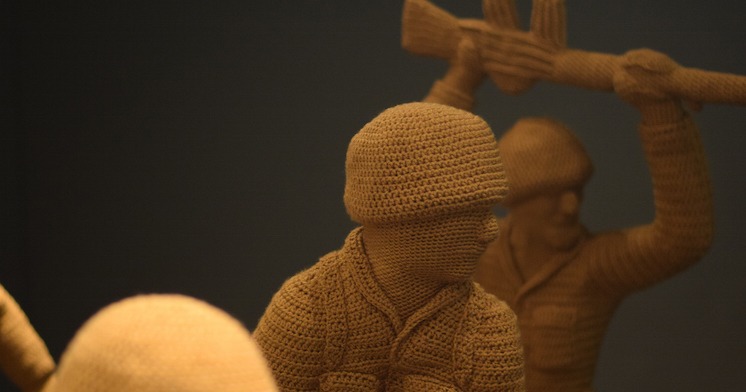


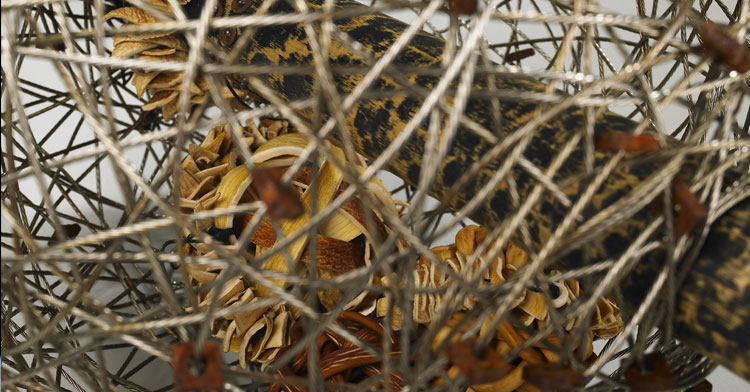
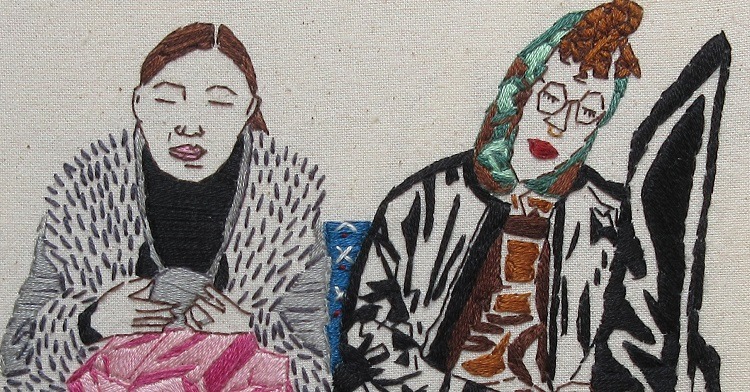
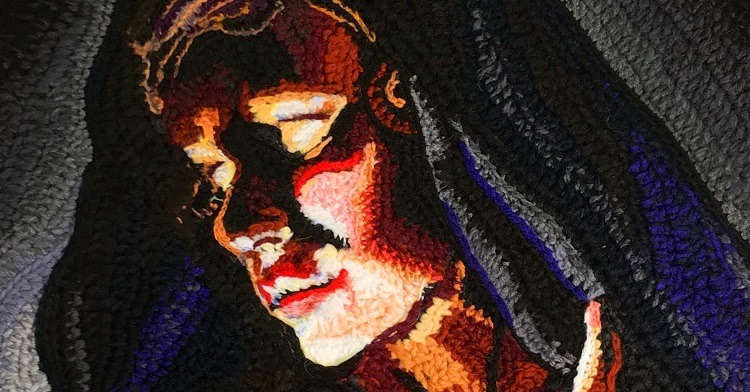
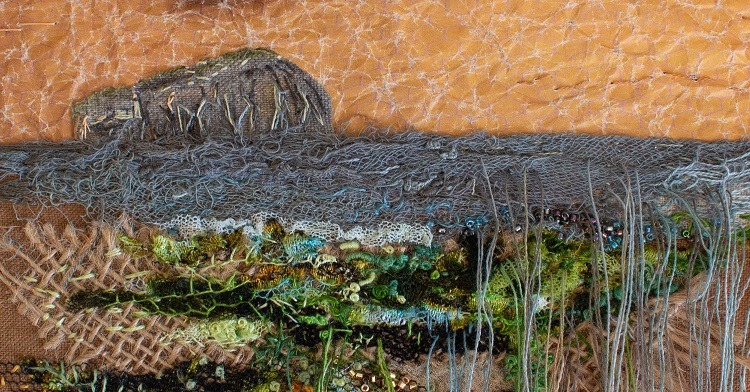
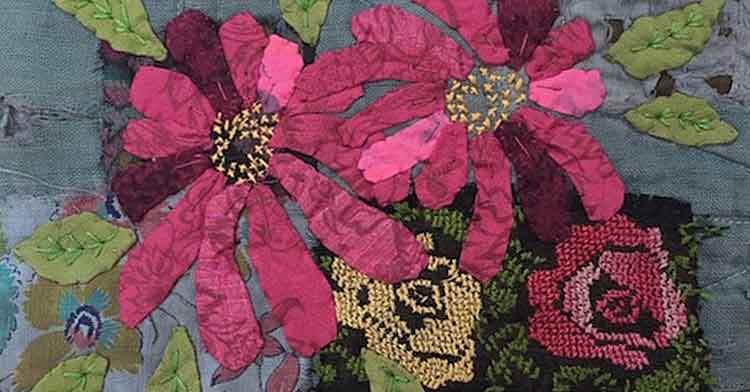

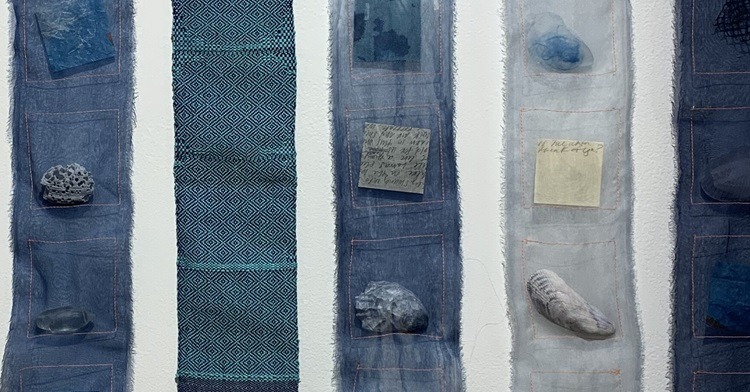
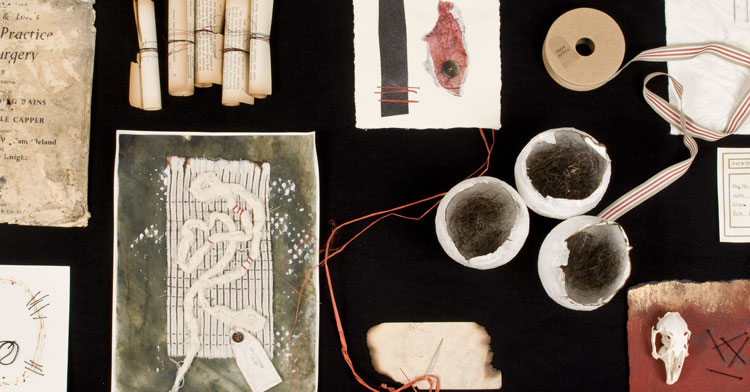
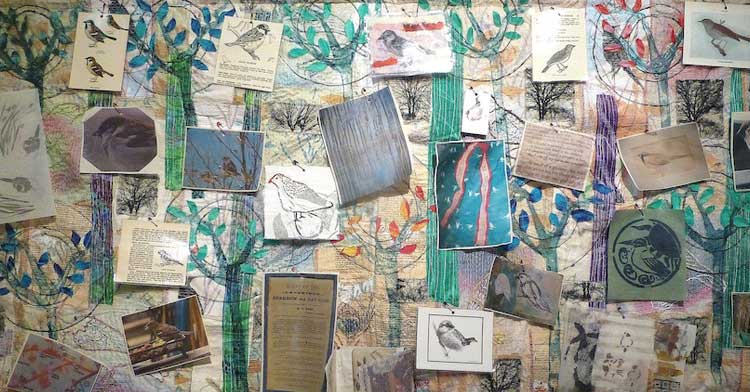
7 comments
Monique
Very meticulous orderly beautiful work. Very creative!
Jiji
Wow! Truly inspiring ! Would like to try making one of ur soldiers.
Linda
Absolutly wonderful !!!
I crochet hats and Afghans.
This work is amazing to me.
MC
What interesting and beautiful work. Congratulations to you and for finding your passion and having the courage and tenacity to pursue it, I admire that greatly!
Mary Boyle
What interesting work. So exciting and innovative. Would have preferred less of soldiers in combat, though.
Carol Downes
Loving your work truly inspirational and a different way of thinking!
Kind of turning pipes and urinals that hold water, into something that could not possibly?
Exciting work!
Anne Myatt
OMG!!